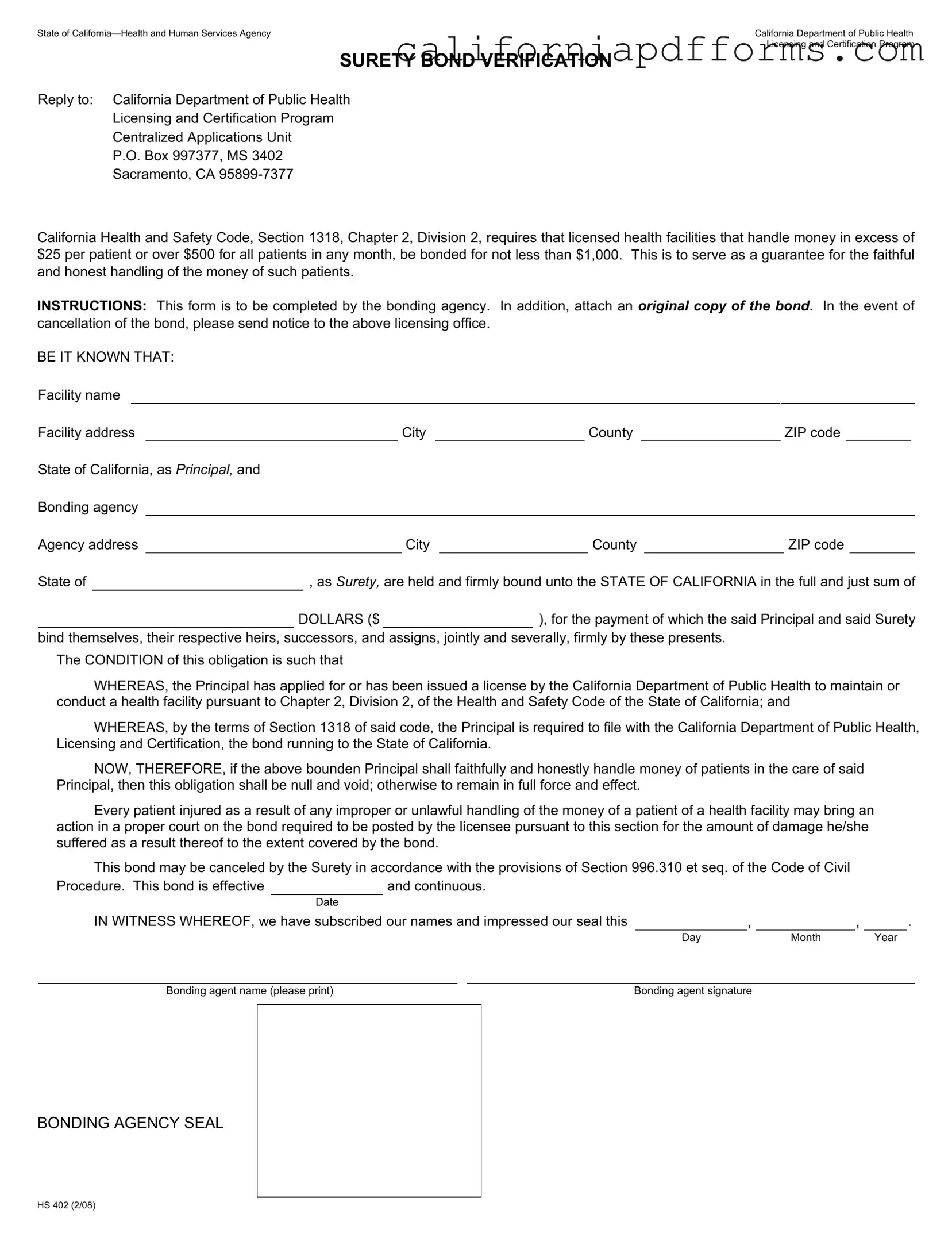Download California Hs 402 Form
The California HS 402 form is a Surety Bond Verification document required by the California Department of Public Health. This form ensures that licensed health facilities handling significant patient funds are bonded, providing a financial guarantee for the honest management of those funds. Completing this form is essential for compliance with state regulations; click the button below to fill it out.
Open Your Form Online
